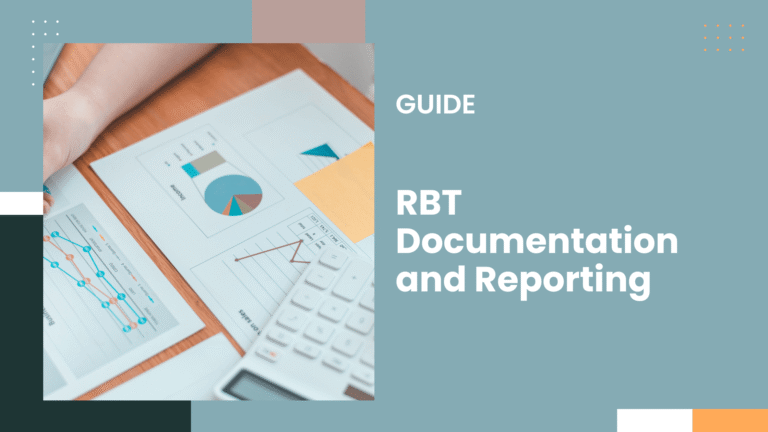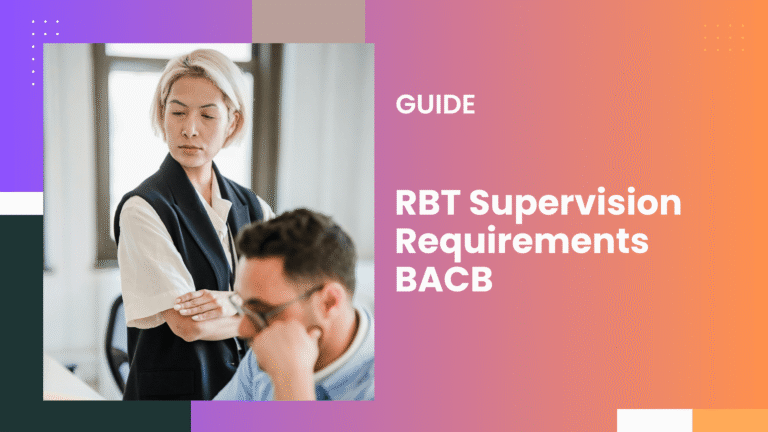Can a RBT Open Their Own Practice: Step-by-Step Guide

Yes, an RBT can open an ABA practice but cannot provide therapy or supervise without a BCBA. To operate legally, hire a BCBA for clinical oversight while you handle business operations. Follow all BACB ethical requirements.
You must have stumbled on my website searching for whether you can operate a practice.
Well, to be honest with you, it’s a yes, but with a caveat, and not that simple. Today I am gonna explain it to you clearly: what you can do, what you’re not allowed to do, and how to make it work the right way.
And that too from different pov —legally, ethically, financially, and practically.
Can an RBT Legally Work Alone?
No, you cannot operate independently as an RBT.
By definition, RBTs must work under the ongoing supervision of a BCBA or BCaBA.
Which means you are not allowed to design programs, supervise other RBTs, or market yourself as an ABA provider unless a qualified behavior analyst is overseeing it all.
And despite my warning, if you do, you risk violating the BACB Ethics Code, which could cost you your credential or worse.
“RBTs aren’t legally allowed to provide behavior analysis services unless supervised. No exceptions.” — BCBA
So… Can You Still Own a Practice?
Yes, you can, but there’s a catch. You can own a business that provides ABA services, but you must hire a BCBA to handle all of the clinical and supervisory responsibilities.
That means:
- You own the business.
- They run the programs, handle parent training, supervise staff, and sign off on everything behavior-related.
- You’re not delivering unsupervised ABA services—you’re facilitating a business where clinical oversight is handled properly.
Think of it this way: you’re the CEO, not the clinical director.
What You Need to Set It Up (Without Getting in Trouble)
If you really are serious about it, then here’s the bare minimum to stay compliant and get started legally:
- A BCBA on contract or payroll
- Business registration (LLC or S-Corp is common)
- Professional liability insurance
- HIPAA-compliant data storage and systems
- Billing infrastructure (especially for Medicaid or insurance)
- Operational policies aligned with BACB guidelines
- Written supervision agreements for all RBTs
By the way, you cannot skip the BCBA step. That’s not optional.
Even if you’re the founder, you must follow the BACB supervision rules for every service offered under your business name.
Real-Life Example: What Other RBTs Have Done
I did scour the internet (FB groups, Reddit, and forums) and found a few stories of RBT starting their business:
“I started my LLC while I was still an RBT. Found a BCBA to co-sign on all treatment plans. I handled admin, payroll, and staff training (not clinical). The BCBA reviewed data and supervised cases weekly.” — RBT turned owner on Facebook group
Another user on Reddit shared:
“The BCBA had to hold the clinical license for billing purposes, but I ran the backend. We worked together, but I never touched the treatment plans.”
The takeaway? It’s possible.
But only with the right people involved.
What It Costs to Start an RBT-Owned ABA Business?
I’m sure you already know and are aware that starting a legit ABA company isn’t cheap.
You’re looking at an estimated startup cost of $15,000 to $100,000+, depending on your setup.
| Item | Estimated Cost |
|---|---|
| Legal setup (LLC, fees) | $500–$1,200 |
| BCBA salary/contract | $50,000–$100,000+ |
| Insurance + liability | $1,000–$5,000 annually |
| Practice software (HIPAA) | $500–$2,000 |
| Office rent (optional) | $1,500–$5,000/month |
| Staff onboarding/training | $1,000–$3,000 |
As you can see, it’s gonna drain your bank account quite a bit.
How Long Does It Take to Set Everything Up?
I’m gonna assume that you already have a BCBA ready to go, your timeline will look like this:
- Business registration: 1–2 weeks
- Insurance, NPI, and credentialing: 1–3 months
- Hiring staff and launching: 3–6 months
In total, you can expect at least 4–6 months before you can take your first client.
If you’re billing Medicaid or insurance, it could definitely take longer.
So, after everything I have told you, and if you still wanna start it, then here’s a quick guide on it.
How to Start an RBT-Owned ABA Business?
Step 1: Form Your Business Legally
Start by choosing your structure—LLC or S-Corp works best for ABA clinics.
Next, you need to register your business with your state and get an EIN from the IRS.
After that, apply for a business license if your state or county requires one.
If this is your first time starting a business and it feels overwhelming, it is, and you can talk to a small business lawyer. It’s gonna be worth it.
Step 2: Write a Business Plan That Makes Sense
Everyone has a different business plan, but in your case, you don’t need a 40-page binder. But you do need a plan.
Here’s what to include:
- Your services (in-home, virtual, or clinic-based)
- Your pricing model
- The number of clients you can realistically support
- Your plan for supervision
- Monthly expenses vs. projected revenue
Step 3: Find a BCBA Who’ll Be Your Clinical Lead
As I have mentioned above, without a BCBA, your business isn’t legal.
My advice is to find someone who:
- Has supervision experience
- Is okay working under your business name
- Can review and sign off on all treatment plans
- Agrees to follow the BACB’s Ethics Code with you
Once you have found someone who is willing to work for you, put it in writing. I always recommend having some sort of formal supervision agreement.
Step 4: Get Your Insurance and NPI Set Up
You’ll need:
- Professional liability insurance
- General liability insurance
- Cyber/data breach protection if you’re storing client info digitally
Next, apply for your NPI (National Provider Identifier) through CMS.gov.
Basically, what this will do is let you bill insurance and Medicaid (if you’re credentialed).
Step 5: Choose Your Systems & Software
You don’t have to make this complicated, but pick a software that keeps you compliant:
- HIPAA-compliant EMR (for progress notes and session logs)
- Payroll or HR platform for managing staff
- Scheduling and billing software with audit trails
But a caveat I want you to avoid is not going for anything that stores data in unsecured apps or drives.
Step 6: Hire Your Team (Start Small)
In the beginning, unless you really have a huge fund to spend (even so) or want to start big, you don’t have to advertise a big job poster.
I suggest you start with the basics:
- 1 BCBA (you already secured this)
- 1–2 RBTs besides yourself
- 1 admin or billing person (optional, but smart)
Keeping the team small initially might be a better option, and expand over time as you grow further.
But just to remind you again, make sure that every RBT you hire gets proper onboarding, ethics training, and written supervision plans.
Step 7: Create Clinical & Operational Policies
Get a system for:
- Treatment plan development (BCBA)
- Progress monitoring
- Client intake
- RBT supervision schedules
- Reporting data and incidents
- Client and staff confidentiality
Step 8: Start Credentialing with Insurance
If you want to accept insurance or Medicaid, get credentialed early.
There is no fixed timeline, but this part can take 2–6 months, sometimes longer.
You’ll need:
- Tax ID
- NPI
- Business license
- Contracts with your BCBA
- Background checks and more
So, if you want to go through this step, I suggest you start this as soon as your BCBA is confirmed.
Step 9: Launch Your Practice
Now, let’s have a quick recap. You now have a
- A legal business
- A supervising BCBA
- Staff and systems
- Insurance in place
- Policies written
- A few referrals lined up…
From the looks of it, you’re ready and can launch your business officially.
I really hope I can be of some assistance, and if you need extra help along the way, you can always leave a comment below or reach out via the contact page, and I will get back to you ASAP.






